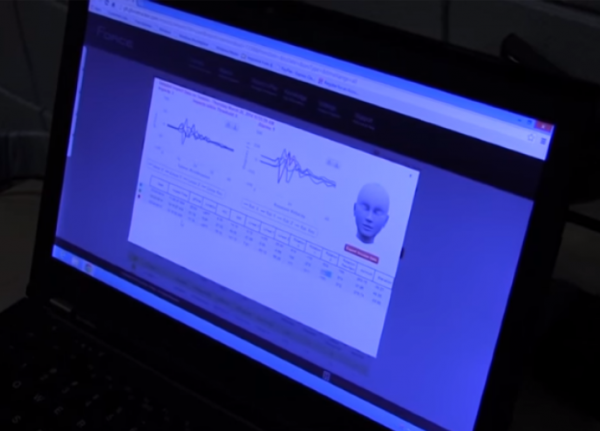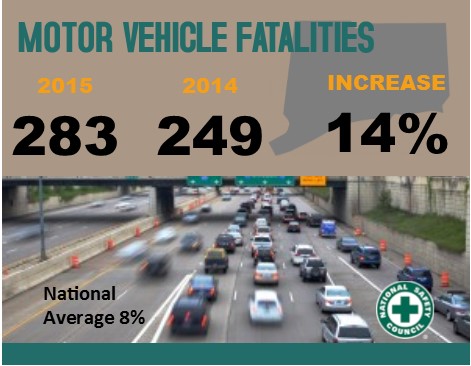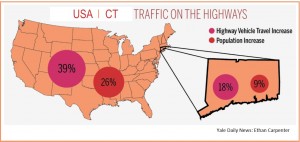PERSPECTIVE: Insurance Company Mergers - Why Patients and Consumers Will Not be Better Off
/by Frances Padilla Many Connecticut residents still don’t know that by the end of this year, Anthem Insurance Co. and CIGNA may merge—forcing us all into a dire situation.
Anthem currently provides health insurance to about 1.1 million state residents and CIGNA covers just short of half a million. If the proposed Anthem-CIGNA merger is approved, the resulting mega-insurer will cover 64 percent of covered lives in Connecticut. Anthem and CIGNA have policyholders in 27 states.
 Additionally, Aetna, with a Connecticut enrollment of about 500,000, is proposing to merge with Kentucky-based Humana, and recent news accounts speculate that it is contemplating moving its headquarters out of Connecticut.
Additionally, Aetna, with a Connecticut enrollment of about 500,000, is proposing to merge with Kentucky-based Humana, and recent news accounts speculate that it is contemplating moving its headquarters out of Connecticut.
We at Universal Health Care Foundation have been tracking these mergers since last June. The plans were made public shortly after the King vs. Burwell Supreme Court decision. That decision, upholding the subsidies in the Affordable Care act, was a big win for consumers.
However, it was also a big win for insurers; as Wendell Potter pointed out in his blog post. Since then, the merger proposals were submitted for approval to the Federal Trade Commission and individual states’ departments of insurance. The United States Department of Justice also has to rule on monopoly implications of the mergers.
In a letter to the Antitrust Division of the DOJ, the American Antitrust Institute states, “The acquisitions are troubling for two important reasons. They are likely to substantially lessen competition in numerous health insurance markets in the U.S., to the detriment of consumers. And, crafting relief that would adequately protect consumers is inherently difficult.”
Mergers are justified on the basis of increased efficiency and opportunity for innovation, but past experience doesn’t uphold those claims. The Anthem-CIGNA proposal should be carefully questioned, because it can be expected to increase health insurance premiums, and cause deductibles, co-pays, and co-insurance out-of-pocket costs to spike.
Cost is already a major reason why consumers put off care. A Consumers Union poll found that costs are a “top of mind” worry for consumers, whether they are insured or not. Thirty-five percent of respondents reported relying on home remedies or over-the-counter drugs instead of going to see the doctor when sick. Another 27 percent did not fill a prescription for needed medicine.
The Kaiser Family Foundation reports that for Connecticut, the average combined employee contributions to health insurance and deductibles doubled from 4.2 percent of income to 8.8 percent between 2003 and 2013, as a percent of median household income. Workers are faced with increasing cost-sharing shifted to them by employers, many of whom are self-insured, and contract insurers to provide administrative services. The use of high deductible plans, widely viewed as “under-insurance,” has taken off.
The Foundation has been using the image of two sumo wrestlers with the consumer and patient caught between the insurers and the hospitals. Hospitals merge, develop new revenue centers, acquire physician practices and create mega-systems with bargaining power over insurers. And insurers merge to gain bargaining leverage, creating monopolies to protect the value of their stocks and meet shareholder expectations. Meanwhile, patients and consumers are left bereft of necessary care and shouldering the burden of medical debt.
https://youtu.be/eTRXFzb_U6c
Final resolution of the insurer mergers is in a holding pattern. No one knows when the DOJ will rule on the antitrust issues, though. It may be in the next few months. Most state insurance commissioners are waiting for that decision to render theirs. Some state statutes require public hearings, but most don’t.
 Some observers think “all eyes are on Connecticut” with how the Anthem-CIGNA merger is handled here, given the market concentration that can be expected. Connecticut statutes require our insurance commissioner, Katherine Wade, to evaluate the financial solvency of the merging companies and the benefit to policyholders. She is a national leader among insurance commissioners and faces some criticism here for her refusal to recuse herself, given her ties to CIGNA.
Some observers think “all eyes are on Connecticut” with how the Anthem-CIGNA merger is handled here, given the market concentration that can be expected. Connecticut statutes require our insurance commissioner, Katherine Wade, to evaluate the financial solvency of the merging companies and the benefit to policyholders. She is a national leader among insurance commissioners and faces some criticism here for her refusal to recuse herself, given her ties to CIGNA.
The Department of Insurance is not required by statute to consider the impact of a proposed merger (or of rate hike increases) on affordability to policyholders. Public hearings held in the past have been held at times and locations inaccessible to most consumers. They do accept testimony online, but few people provide it.
It is not yet clear when there will be a public hearing called in Connecticut. We do know that there has to be 30 days public notice. And we have been told that there is interest in hearing from consumers, health care providers and employers.
Contact us if you want to have your voice heard by state officials, and join us to make sure people’s interests are put first.
_________________________________________________
Frances Padilla is President of Universal Health Care Foundation of Connecticut

PERSPECTIVE commentaries by contributing writers appear each Sunday on Connecticut by the Numbers.
Last week: 2016 to be a Year of Power Shifts and Workforce Facelifts.




 Nationally, 2015 saw the largest single-year percent increase in motor vehicle deaths since 1966. Estimates from the National Safety Council (NSC) show an 8 percent increase in 2015 compared with 2014 – with substantial changes in some states, including Connecticut. There were 283 motor-vehicle related deaths in Connecticut last year, compared with 249 in 2014 and 276 in 2013.
Nationally, 2015 saw the largest single-year percent increase in motor vehicle deaths since 1966. Estimates from the National Safety Council (NSC) show an 8 percent increase in 2015 compared with 2014 – with substantial changes in some states, including Connecticut. There were 283 motor-vehicle related deaths in Connecticut last year, compared with 249 in 2014 and 276 in 2013.
 safety, the National Safety Council recommends drivers:
safety, the National Safety Council recommends drivers:




 The OLR report also indicates that a Federal Highway Administration pilot program permits up to three states to toll existing Interstate highways that they could not otherwise adequately maintain or improve, and increase funding available for public transportation initiatives. In addition, $2.6 billion is provided to Amtrak’s Northeast Corridor (and $5.4 billion to other Amtrak lines) over five years. It separates the Northeast Corridor, from Boston to Washington, D.C, from other Amtrak accounts to ensure that the amounts assigned to that Corridor are used there, OLR reports.
The OLR report also indicates that a Federal Highway Administration pilot program permits up to three states to toll existing Interstate highways that they could not otherwise adequately maintain or improve, and increase funding available for public transportation initiatives. In addition, $2.6 billion is provided to Amtrak’s Northeast Corridor (and $5.4 billion to other Amtrak lines) over five years. It separates the Northeast Corridor, from Boston to Washington, D.C, from other Amtrak accounts to ensure that the amounts assigned to that Corridor are used there, OLR reports. When Connecticut voters go to the polling places on Tuesday, April 26, voters in nearly two-thirds of the states will already have made their preferences known. The same day as Connecticut, presidential primaries will also be held in Delaware, Maryland, Pennsylvania and Rhode Island. The previous week, primaries will be held in New York, a state called home, at various times, by three of this year’s leading contenders – Hillary Clinton, Bernie Sanders and Donald Trump.
When Connecticut voters go to the polling places on Tuesday, April 26, voters in nearly two-thirds of the states will already have made their preferences known. The same day as Connecticut, presidential primaries will also be held in Delaware, Maryland, Pennsylvania and Rhode Island. The previous week, primaries will be held in New York, a state called home, at various times, by three of this year’s leading contenders – Hillary Clinton, Bernie Sanders and Donald Trump.
 diana, New Mexico, California, New Jersey, Nebraska, West Virginia, Oregon and Montana. Most states have their Democratic and Republic primaries on the same day, although a handful hold party primaries on different days. South Carolina’s Republican primary will be on February 20, for example, and its Democratic primary on February 27.
diana, New Mexico, California, New Jersey, Nebraska, West Virginia, Oregon and Montana. Most states have their Democratic and Republic primaries on the same day, although a handful hold party primaries on different days. South Carolina’s Republican primary will be on February 20, for example, and its Democratic primary on February 27.
 NOT ENOUGH PEOPLE. The growth rate of the US population aged 18 to 64 is rapidly decelerating and will remain very low through 2030.
NOT ENOUGH PEOPLE. The growth rate of the US population aged 18 to 64 is rapidly decelerating and will remain very low through 2030. challenges, an aging workforce, and lack of coordination and overlap in services, now is the time to create more public / private partnerships to drive success.
challenges, an aging workforce, and lack of coordination and overlap in services, now is the time to create more public / private partnerships to drive success. ecessarily result in that many jobs,” according to the website
ecessarily result in that many jobs,” according to the website  . Boston may be in the running for similar relocations.
. Boston may be in the running for similar relocations. The Crain’s article reports that headquarters began shrinking a decade ago, but the trend has accelerated in the past three years, according to Vinay Couto, a consultant in the Chicago office of Strategy&. In recent years, 16 companies have relocated their main headquarters to the city from the suburbs. Seventeen came from outside the metro area. The phenomenon, he points out, is driven by the outsourcing of shared services such as IT, accounting and human resources, as well as by a mindset borrowed from private equity to cut overhead and make every part of a business count toward profitability.
The Crain’s article reports that headquarters began shrinking a decade ago, but the trend has accelerated in the past three years, according to Vinay Couto, a consultant in the Chicago office of Strategy&. In recent years, 16 companies have relocated their main headquarters to the city from the suburbs. Seventeen came from outside the metro area. The phenomenon, he points out, is driven by the outsourcing of shared services such as IT, accounting and human resources, as well as by a mindset borrowed from private equity to cut overhead and make every part of a business count toward profitability.

 age, MSW, Director of Community Organizing, Yale Program for Recovery and Community Health. “We know that good nutrition plays a key role in mental health and that’s why the mental health community is here today to support the Witnesses.”
age, MSW, Director of Community Organizing, Yale Program for Recovery and Community Health. “We know that good nutrition plays a key role in mental health and that’s why the mental health community is here today to support the Witnesses.”


























